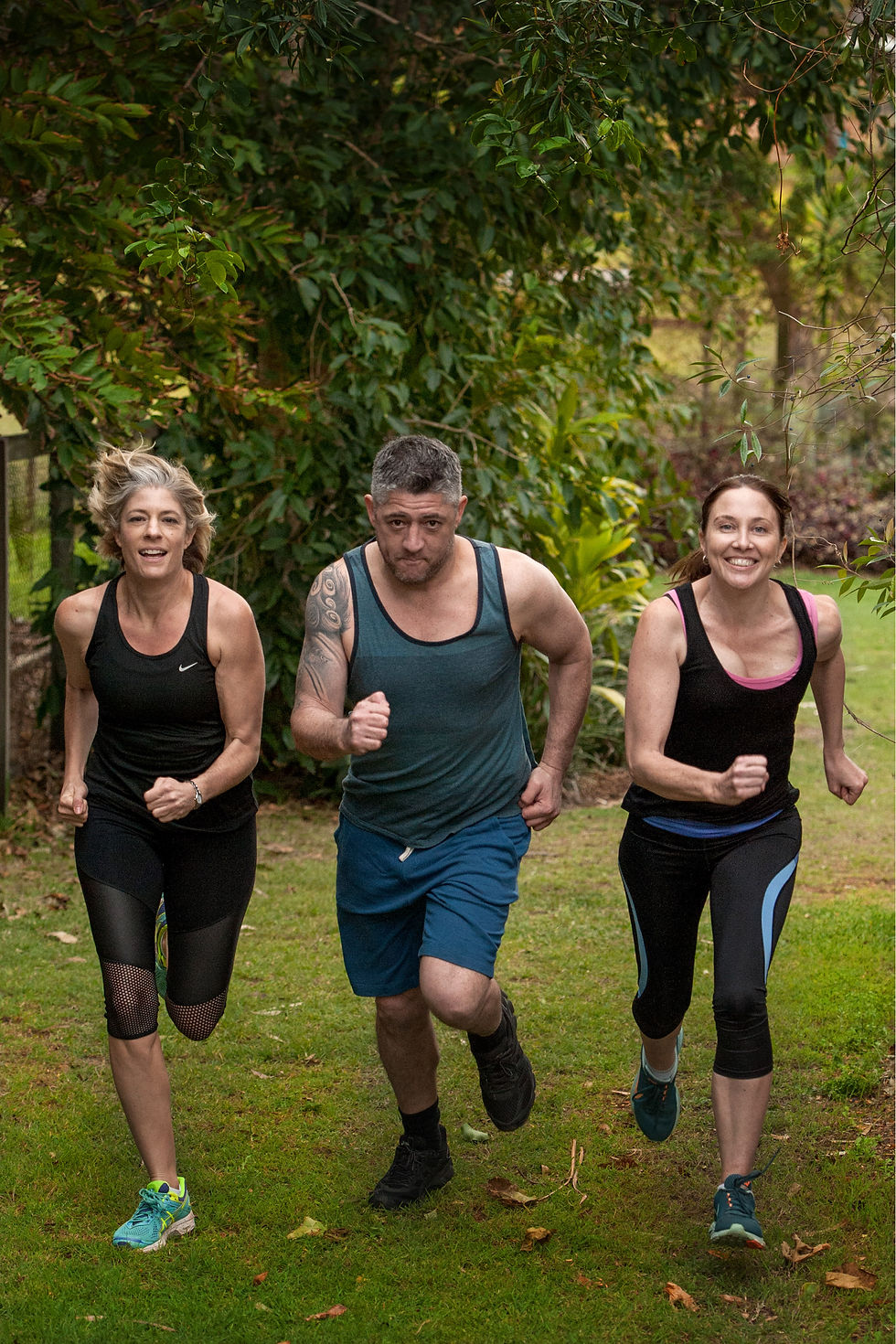Core values
- Jay Buchan
- Oct 6, 2016
- 3 min read
You have probably heard the term “engage your core”.
But if you don’t really know what it means or don’t know how to do it properly, chances are you’re not strengthening your core at all, which could be placing your back at risk of injury.
A strong core is the most basic essential from which to build your strength and fitness.
Think of it as the foundations of the building that is your physical fitness.
Without it all the fancy furniture (big biceps), flash kitchen (tight buns), latest fittings (toned legs), etcetera are at risk of coming crashing down.
I know.
I’ve been there.
Years ago I started getting some lower back pain.
It was nothing I couldn’t push through so I ignored it, even though it was increasingly present.
But I was fit.
I was running, cycling, swimming, playing touch footy and more.
But the back pain persisted, so I saw a physio.
The physio gave me some core strengthening exercises to do and I did them, but one thing was missing.
In her explanation she didn’t adequately teach me how to engage my core before doing them.
So I was actually using the wrong muscles and my back continued to get worse.
Eventually it “went” on me and I was immobilised for four days on the floor with some of the worse pain I have endured.
Fortunately a new physio taught me how to engage my core.
Unfortunately there was no quick fix.
I had to learn how to engage the core muscles and not rely on the upper abdominals (rectus abdominis – or six-pack muscles) and my bad back.
This took concentration and practice.
A common way of explaining how to engage your core is to try and “suck your belly button towards your spine”.
But it is not that simple.
You want to be able to feel all the little muscles that join your lower spine with your pelvis and hips flexing together.
It’s almost like sucking your belly button into your spine while using the muscles you would use to snap off a poo.
For me I couldn’t do this at first without engaging my upper abdominals.
But I realised that once my upper abdominals were engaged, I could move the engagement (or flex) lower from that point.
Then I was able to relax the rectus abdominis and fully engage the core muscles.
Yet for two more years I continued to suffer from chronic back pain.
From the moment I rolled out of bed in the morning I knew if it was going to be a painful day or an excruciating day.
Sticking to my core routine was the only hope.
The routine was alternating between 20 one legged squats each leg (engaging the hamstrings, rather than the quads) or lunges; 20 leg extensions (lying on my back with core engaged, extending my feet horizontally just above the floor and back) or 45 degree leg extension, then lower, then bring back horizontally just above the floor; and three sets (on each leg) of single leg supine bridges.
Eventually I was able to engage my core without having to think about the process, it had become automatic (muscle memory kicking in).
I do the routine front of the TV each morning and it takes about 10 minutes.
If I got complacent, thinking my back was better and neglecting my core routine, inevitably it would lead to my back going out on me again, which meant days of immobility and serious pain.
It took me five years of doing these exercises almost every day until I reached the point I didn’t have any back soreness and I could confidently do most of the things I used to be able to without the fear of my back going.
Now my back ifs fine. I can do heavy squats and deadlifts, wrestle with the kids, work in the garden all day and not worry about a sore back – so long as I have been sticking to my core routine.




Comments